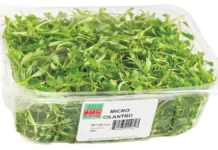
Your suppliers care about their profitability, not yours.
Get to know these words and take control of your cash.
Four “words” stand between you and more money in the bank. They’re words your suppliers don’t want you to know. They’re words that have to do with food costs and food trends. And they can save you money.
They can be the difference between your restaurant being a success or just a mention in a newspaper article about restaurant closings. For suppliers, these words spell profits – even if they’re not using them to their advantage on purpose.
Sometimes, it’s just negligence on both of your parts. Or misplaced information. But no matter what, your ignorance is costing you cash.
Being familiar with the 4 Dirtiest Words in Supplier Pricing will make the difference you need. Your suppliers may not be thrilled, but you’ll be laughing all the way to the bank.
1: PRICE CREEP
The regular and consistent rise of a price – in small quantities – over time. You’ve noticed this happening. A few months ago, a flashy new supplier came along and said he could sell you eggs for $2 less a carton. The decision felt obvious, and you made the switch.
Things were great! Money was saved! But, over time, you noticed your books venturing back to where they started… And you find that those “cheap” cartons of eggs were now the same price as what you used to pay.
So how do you avoid this?
Well, you could do research and see what the market is paying for each ingredient, plot it on a graph, then figure out if you’re paying according to general trends. Or, with the right tools and technology, you can automatically be updated with market trends, so you can see if your food costs are increasing in proportion to the market.
2: PRICE SPIKES
When a food cost unexpectedly jumps up then drops back down with seemingly no explanation. You’ve been buying ground beef at a consistent price for months. Then, out of nowhere, you get an order that’s $.42 more a pound. That’s well above the average your neighbors are paying.
Maybe your supplier started ordering a different ground beef. Or maybe they just messed up a number. But without proper inventory and invoice tracking, you won’t see price spikes like this until months after they happen.
You’ll be combing through old invoices and happen upon them. But by then, they may have happened multiple times. But, if you’re monitoring your invoices, you can catch spikes quickly. It’s a rough convo to have with a trusted supplier. But hey – maybe it’ll get you a refund.
3: OVERMARKET
Paying more than the average restaurant pays for the same ingredients. You know that most restaurants should pay about the same for various ingredients. But each chart has its outlier. Don’t be that outlier.
Unless you’re paying way under, in which case tell us your secret, please. Suppliers aren’t going to tell you when you’re overmarket, or even when one of your restaurant locations is paying more than another for the same ingredients.
There are two great ways to solve this. You can either get internet-savvy and check market prices for your most-used ingredients, or you can find technology that does it for you. For example, we found that one of our customers was paying over a dollar more per pound of bacon at one of their two locations.
This amounted to a $19.65 overspend on 15 lb. of bacon. Even if you’re buying only 50 lb. of bacon per month, that’s a lot of cheddar.
4: PACK SIZE + EFFICIENCY
Saving money by purchasing commonly used items in bulk. You’re constantly placing the same orders for the same ingredients from the same suppliers.
So, you’re probably forgetting to pause, take a step back, and analyze the efficiency of your purchases. If you do, you might find that in the long run, ordering a case of 12 romaine hearts once a week is often way cheaper than buying a 3-heart case every few days.
Even if you have to discard a few hearts, you end up way ahead. You may think finding these bulk deals is as simple as chatting with your rep. But your rep is quite happy selling you higher-price split cases.
They’ll make sure you’re very aware of how perishable the ingredient can be, or how it might overcrowd your stockroom.
What can you do? Your research. Try and find the pricing of items in bulk, and determine if that type of purchase can affect your business.
LEARN THE WORDS. KNOW THE WORDS. END THE WORDS.
Knowing these four words is going to change how you run your business.
With this knowledge, you’ll be able to find even more secret ways for you to be profitable in your restaurant’s data.
But don’t forget, there are dozens of software solutions out there that can help you out. Solutions that can spot price spikes before they happen, pay attention to price creep, and notify you when it’s cheaper to buy in bulk or from a different supplier.
Do your research, and you’ll be reaping the benefits. There’s no reason to let your suppliers run rampant when you can start saving with just a little extra work.























